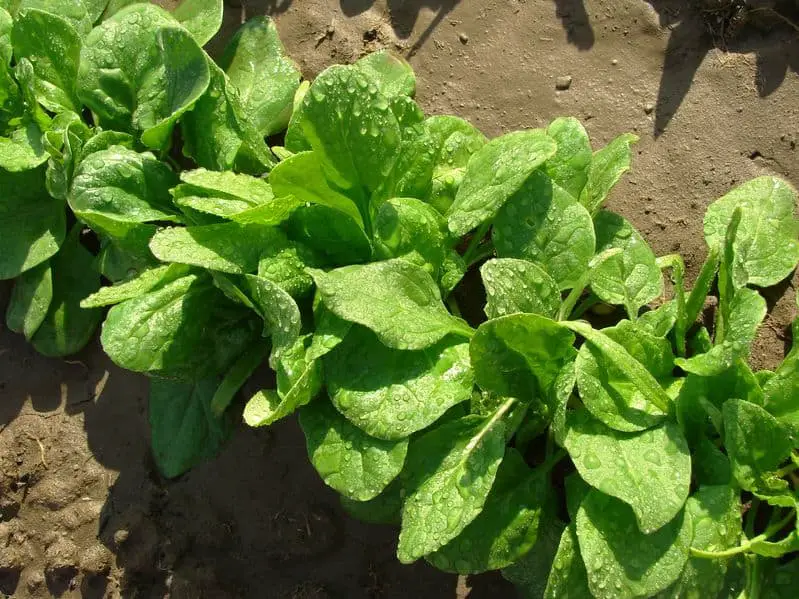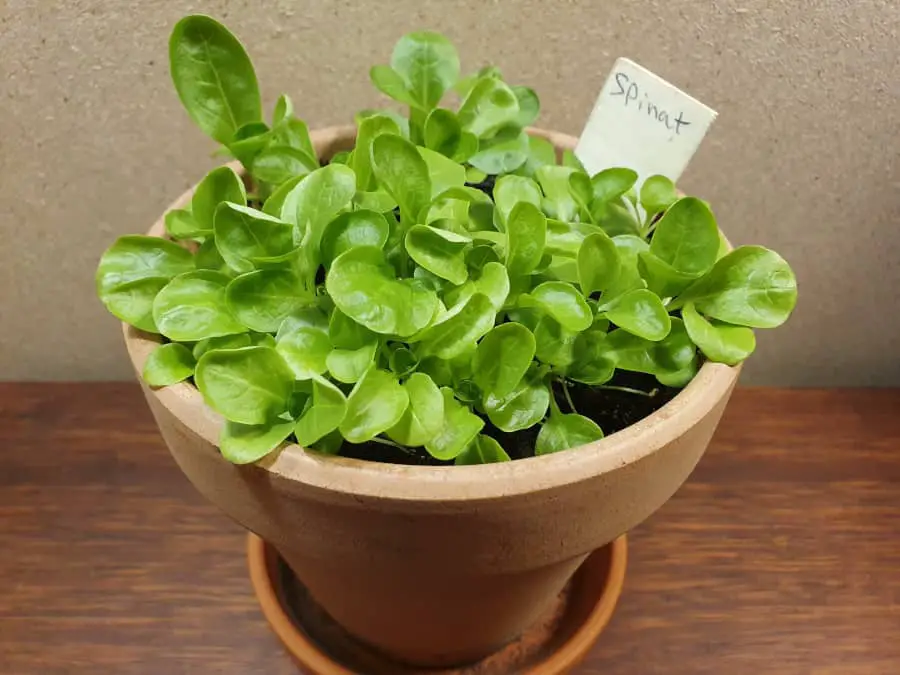When I first started growing spinach, I thought it was a very easy crop to grow and to be fair, it is, but there are some very simple, yet powerful little tricks I have learned over time that can really increase the yield.
To get the highest yield from your spinach, pick the outer leaves first and never harvest the entire plant. This allows for continuous growth and harvests. 4-14 hours of sunlight per day and temperatures between 50-70°F (10-21°C) further increase the yield.
Despite what it may sound like, spinach is actually a very easy crop to grow. Maximizing your spinach yield, however, is not as easy, so I have written this post where I describe some of the tricks I use to give my spinach the best conditions so it will provide me with a good yield in return.

How Can You Increase Your Spinach Yield? 3 Tips
I have collected a couple of easy and actionable tips you can follow to increase your spinach yield.
Tip #1 for maximizing spinach yield:
- Don’t give your spinach too much direct sunlight.
If spinach isn’t in full sun constantly, it takes a lot longer before it begins to bolt, which more or less stops the production of new leaves. The best amount of sunlight for spinach is 6-10 hours. You can read more about that in this article.
As a general rule, spinach will begin bolting when it is exposed to temperatures that exceed 75°F (24°C) or sunlight for longer than 14 hours per day.
When spinach is bolting, a long, thin stem will grow from the center of the plant, and the leaves will begin to change shape from round or oval to pointy.
The taste of the leaves will become much more bitter, so unless you are planning on harvesting seeds, I recommend just removing spinach when it begins to bolt so you can plant some new seeds instead.
Tip #2 for maximizing spinach yield:
- Don’t remove the entire plant when you harvest.
When you harvest your spinach, you can cut it about an inch (2.5 cm) from the base and leave the base of the plant in the soil. This will allow the plant to regrow new leaves if you keep watering it and giving it a small dose of fertilizer every few weeks.
In my experience, however, the first harvest is always much better than subsequent ones, so I don’t really harvest spinach this way. Instead, I grow several plants at the same time and harvest the leaves one by one, picking the outer leaves first. This is my next tip.
Tip #3 for maximizing spinach yield:
- Pick the outer leaves first for a longer harvest period.
When you pick the outer leaves from the spinach and let the rest of the plant stay, the plant will keep producing, allowing you to harvest over and over again.
I like to plant a few spinach seeds every week or so throughout the entire growing season (which usually starts in April or May and ends in September or October. That way, I can harvest fresh spinach every week for months.
Figure out if you like this tip or the one above more for harvesting your spinach. Both of them will increase the overall yield significantly compared to just harvesting the entire plant at once.
Best Conditions For Maximizing Spinach Yield
Some conditions must be met for spinach to grow at all, and some conditions are not necessary but will significantly increase the overall amount of spinach you can harvest from your plants.
The ideal temperature for spinach is 50-70°F (10-21°C). Spinach cannot survive frost, so it must be grown in a place where the temperature never dips below 32°F (0°C), but temperatures should also not exceed 75°F (24°C) since that will cause spinach to bolt.
There are also some good tricks to know about when it comes to the soil and how you should water your spinach.
Spinach should be grown in well-drained, slightly acidic soil with a pH of between 6.5-6.8. Since the root system of spinach is not so large, it needs water often but in small doses. Watering often also keeps the roots cold which reduces the likelihood that your spinach will begin bolting.
I have made this table to give you a quick overview of the ideal growing conditions for spinach to increase the yield:
| Temperature | 50-70°F (10-21°C) |
| Sunlight | Sun or partial shade |
| Hours of sun | 4-14 hours |
| Soil | Well-drained and slightly acidic (pH 6.5-6.8) |
| Watering | Small doses. Often |
| Fertilizing | A light dose of fertilizer every 2-3 weeks |
| Ground or container | Both |
How much sunlight the spinach gets is especially important when it comes to the yield. You can read more about that on this link.
Optimal Spacing for Spinach to Get the Highest Yield

An important thing when it comes to growing spinach is to give the plants the space they need.
As a general rule, spinach should be grown in rows that are 7-11 inches (18-28 cm) apart with 3-6 inches (7.5-15 cm) between each plant in the same row. That way the plants have enough room to reach their full size.
I experimented a bit with growing spinach in a container. As you can see in the photo above, I planted a lot of seeds in a rather small space. This can also work really well, but each plant won’t get as large as if you follow the guidelines for spacing I wrote above.
Best Time to Grow Spinach for the Highest Yield
What time of the year you grow your spinach has a big impact on the yield of your plants.
The ideal time to start growing spinach to get the highest yield from it is in April or May, depending on the weather in your region. Spinach can be grown for the entire summer and usually grows very well until September or October.
Spinach cannot withstand frost so growing it in the winter is not an option in most areas unless you grow it indoors in a container in which case you can most likely grow spinach all year, as long as it gets a few hours of sunlight most days.
I found an interesting report from the American Society for Horticultural Science where a group of researchers investigated the yield of winter-grown spinach under various conditions. I recommend reading about that if you are planning on growing spinach in the winter and really want to optimize it for yield.
I like to grow spinach from as early as possible until as late as possible to get as much of it throughout the year.
Since spinach will begin bolting much faster in the summer when the days are long and the temperatures are high, I especially like to grow it in the spring and the fall since the days are not too long and the temperatures not too high, thereby allowing the plants to grow for much longer without bolting.
